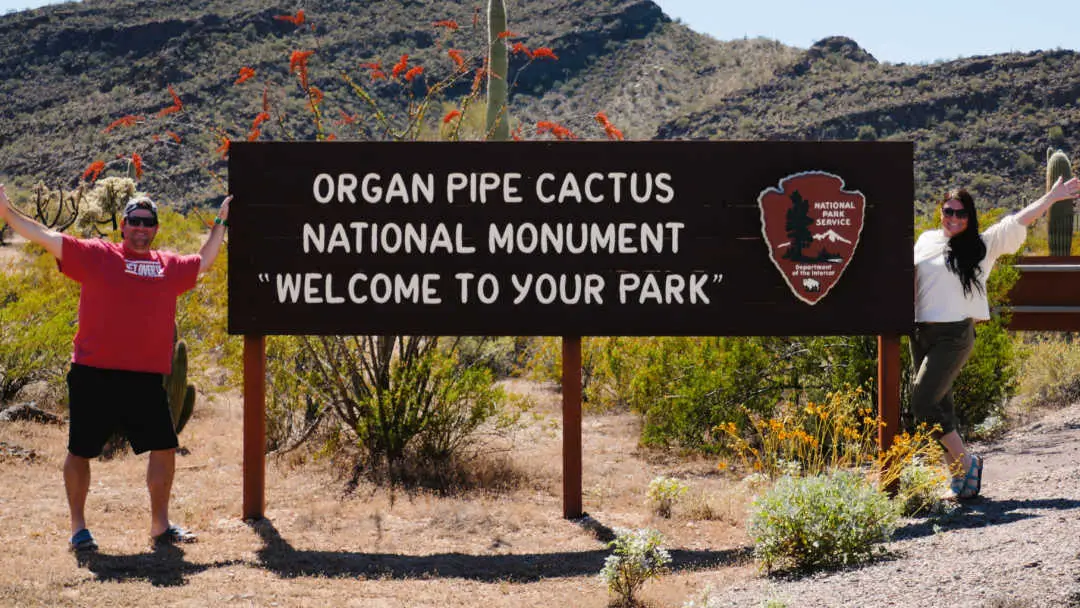For quite some time, the Organ Pipe Cactus National Monument was considered to be America’s most dangerous national park. Over the last couple of decades, armed drug and human traffickers were so prevalent in this vast desert that visitors were barred from entering more than half of the park.
Past governments should have never allowed the situation to grow so out of control. After all, the park is located in one of the greatest ecosystems in the world.
Organ Pipe Cactus National Monument
Visiting the Organ Pipe Cactus National Monument was so dangerous that in 2002 a park ranger was killed while pursuing a group of smugglers. Kris Eggle—an Eagle Scout, a National Honor Society Student, and valedictorian of his graduating class at Cadillac High School in 1991, and a graduate of the University of Michigan where he earned a degree in wildlife biology—was tragically killed at the age of 28.
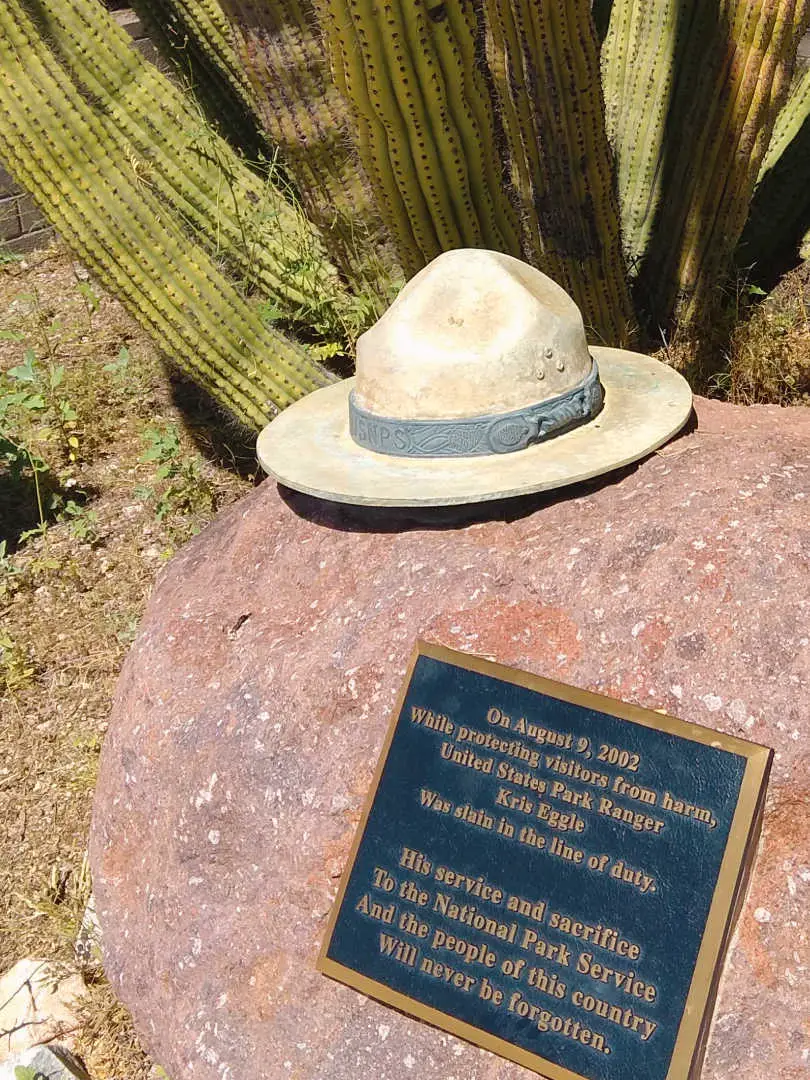
As a result of the killing, visitors brave enough to hike through the park’s most dangerous areas were required to be escorted by armed rangers carrying long rifles. In 2020, under emergency coronavirus measures, migrants who crossed into the US illegally were expelled to Mexico within an average of 96 minutes, causing the number of people attempting to cross to plummet.

Update: Current Safety Conditions (2025)
Good news, national park lovers! As of March 2025, the border is the most secure in recorded history. Translation? It’s finally time to check out the only place in the US where the organ pipe cactus grows wild—without needing a bulletproof vest! Plus, this desert paradise is one of the few spots to spot elephant trees on American soil. Cactus selfies, scenic drives, camping under stars so bright they’ll melt your brain—all now available without an armed escort!
Difference Between National Park and Monument
Here’s your “I sound smart at parties” tidbit: National parks are protected for their scenic, recreational, and educational awesomeness. National monuments, on the other hand, protect specific cultural, historical, or scientific goodies—which means they can be wildly different from each other.
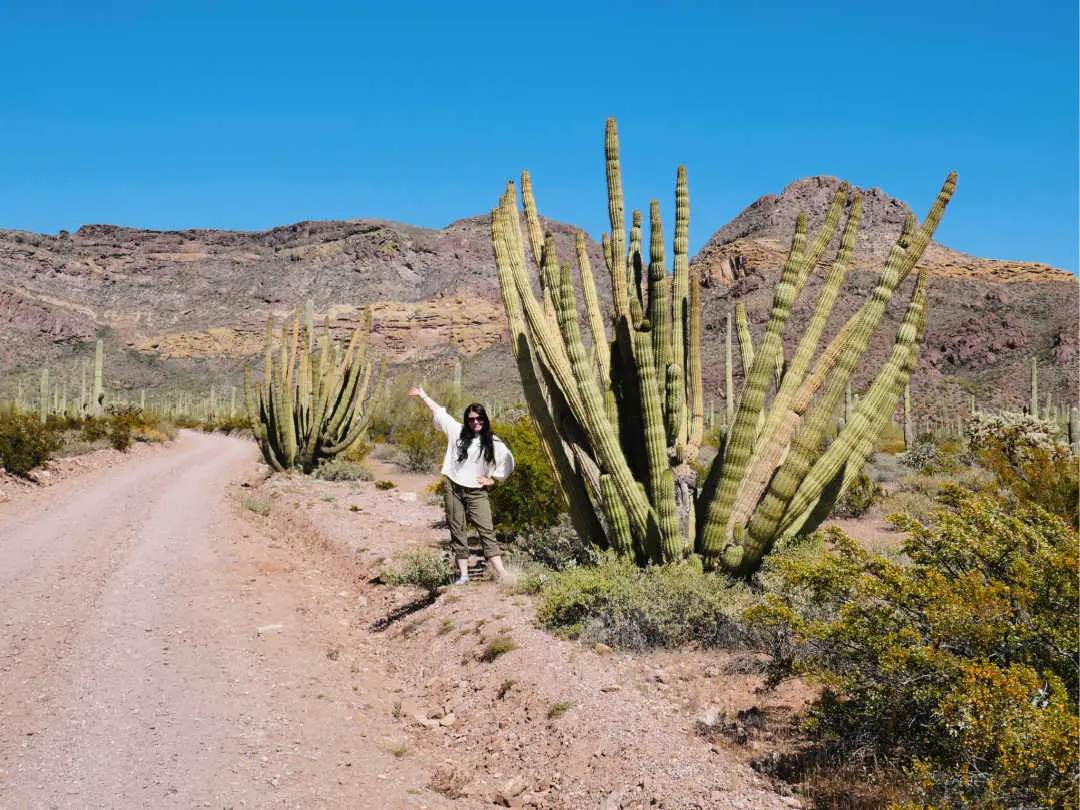
So while parks are like the all-around jocks of protected lands, monuments can protect anything from massive cacti (hello, Organ Pipe!) to military forts, fossil sites, ancient ruins, or even buildings like George Washington’s birthplace.
Where to Crash: Hotels Near Organ Pipe Cactus National Monument
Why drive back and forth like a desert nomad when you can just crash nearby? The trek from Phoenix to Organ Pipe takes about two hours one-way, so plan accordingly—unless you’re into marathon road trips, in which case, go nuts.
The closest hotel to the park is America’s Choice Inn & Suites in Gila Bend, about an hour from the park. It’s not the Ritz, but hey, it’s got beds and Wi-Fi—what more do you need after a day of cactus selfies?
If You’re Based in Phoenix, Here’s the Scoop:
💰 Budget-Friendly Picks:
- Courtyard North: Modern, clean, and perfect for those who want to feel fancy without the fancy price tag.
- Drury Inn & Suites Happy Valley: Pool, hot tub, and a name that sounds like it belongs in a rom-com. What’s not to love?
💸 Mid-Range Magic:
- Arrive Phoenix: A charming boutique hotel that’s basically Instagram bait. Your followers will thank you.
✨ Luxury Living:
- Royal Palms Resort: Camelback Mountain views, spa vibes, and enough luxury to make you feel like royalty (hence the name).
- Kimpton Hotel Palomar: Downtown glamour with a side of rooftop pools and swanky vibes. Perfect for those who want to live their best life.
What to Do in Phoenix (Besides Melt in the Heat)
Extending your Arizona adventure? Here’s how to get your adrenaline pumping:
🚜 Excursion: 2-Hour Arizona Desert Guided Tour by ATV — Because nothing says “I conquered the desert” like blasting through it on four wheels at ridiculous speeds!
Best Things to Do in Organ Pipe Cactus National Monument
Most sane humans visit Organ Pipe during the cooler months. Why? Because summer temps can melt your face off at 110+ degrees Fahrenheit. That said, if you’re part desert lizard or just really hate being cold, the Sonoran Desert offers its own kind of magic year-round.
Fun cactus fact: Organ pipe cacti live about 150 years and don’t bloom until they’re 35 (talk about a late bloomer!). Their white, cream-colored flowers only open at night in May and June—nature’s exclusive nightclub.
1. Take a Scenic Drive
Let’s be real—the absolute best way to see this park is from the air-conditioned comfort of your vehicle. Pack that cooler with ice-cold drinks and plenty of snacks, then crawl along at Disney ride pace to soak up the desert vibes.
This isn’t just about being lazy (though that’s a bonus). Going slow means you might spot Desert Bighorn sheep, Mule Deer, javelina, Sonoran Pronghorn, and if you’re ridiculously lucky, a Gila monster sunbathing on the road. These elusive reptiles are basically the desert’s version of celebrity spotting.
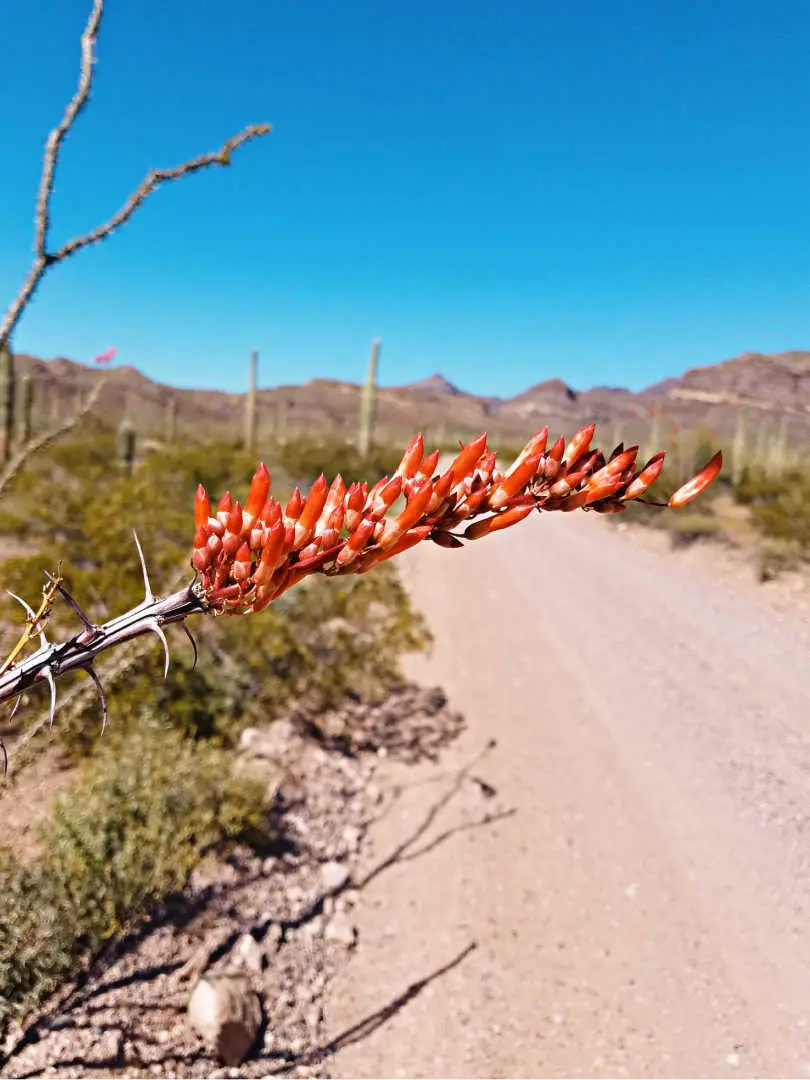
Two mind-blowing drives await you:
Ajo Mountain Drive
The people’s favorite! This 21-mile gravel road is smooth enough for your city-slicker compact car, though we wouldn’t bring anything that makes you nervous in remote areas. The park service keeps it maintained, but remember—you’re in one of the most remote parts of the entire country. No 24-hour roadside assistance out here, folks!
Important note: If your RV is longer than 24 feet, it’s a no-go. The road’s like “nope, not today, big guy.”
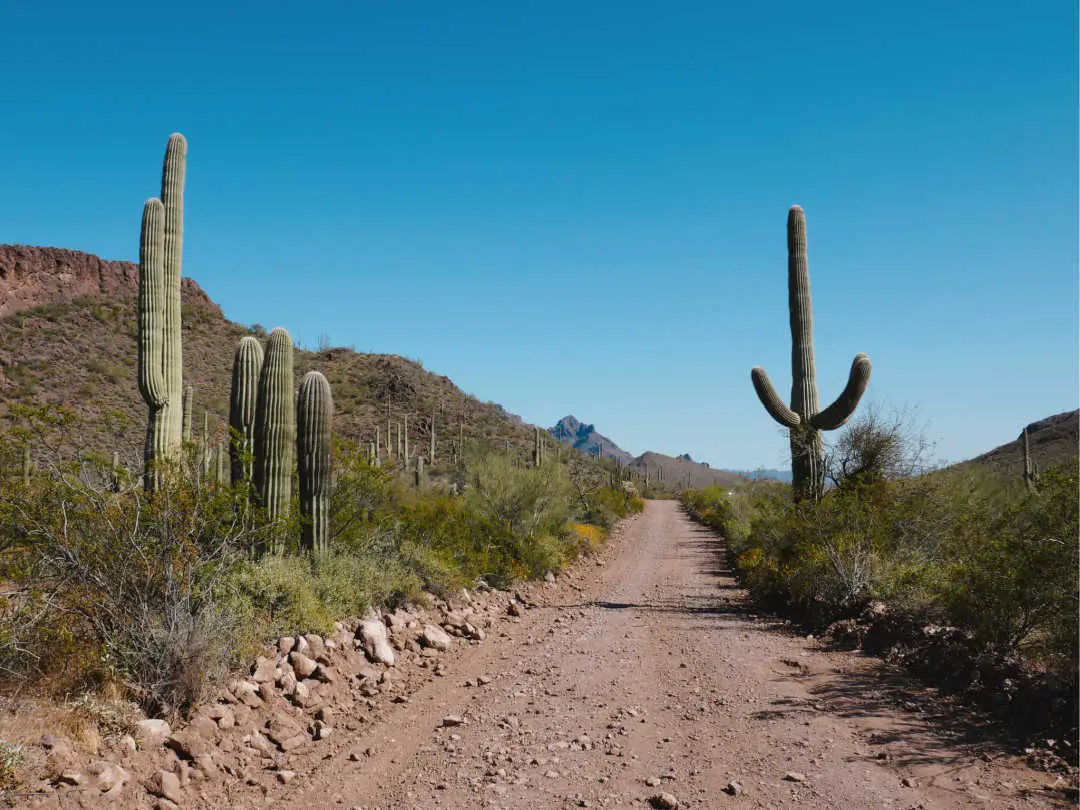
This 90-minute journey from the Kris Eggle Visitor Center transforms from flat cactus plains to rolling hills to jaw-dropping volcanic mountains. Perfect spots for impromptu photoshoots abound, and you can hop out to tackle either the Estes Canyon/Bull Pasture Loop (3.1 miles) or Arch Canyon Trail (1.4 miles).
Puerto Blanco Drive
Once the sketchy side of the park, this 37-mile loop is now fully open and totally safe! From the visitor center, you’ll head west toward the Puerto Blanco Mountains, with plenty of stops to make your Instagram followers jealous.
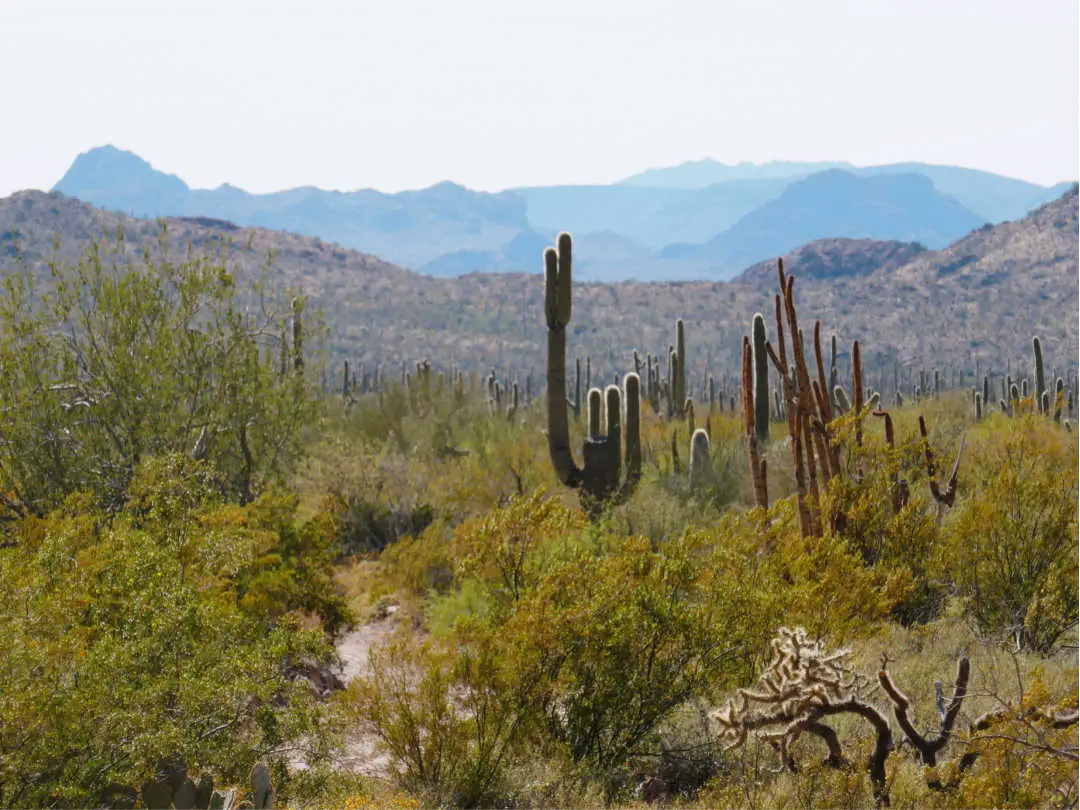
Highlights include Pinkley Peak Picnic Area (great name!), Senita Basin, Red Tanks Tinaja trail, Dripping Springs Mine trail, and Quitobaquito Springs. Border wall enthusiasts can check out the massive barrier up close, but anything past Pinkley Peak requires a high-clearance vehicle—your Honda Civic might throw a tantrum.

2. Enjoy a Bike Ride
Got quads of steel? Mountain bikes are welcome on all roads (but not trails). The Ajo Mountain Drive offers an epic pedal-powered adventure—just remember to be back before dark or you’ll be cactus food.
3. Look for Wildlife
Organ Pipe isn’t just about the prickly stuff—it’s a veritable zoo of desert critters! Keep your eyes peeled for javelina (desert pigs with attitude), roadrunners (way less cartoonish than TV led you to believe), scorpions (check your shoes!), Gila monsters (rare but rad), and SIX different kinds of rattlesnakes (give them personal space, lots of it).
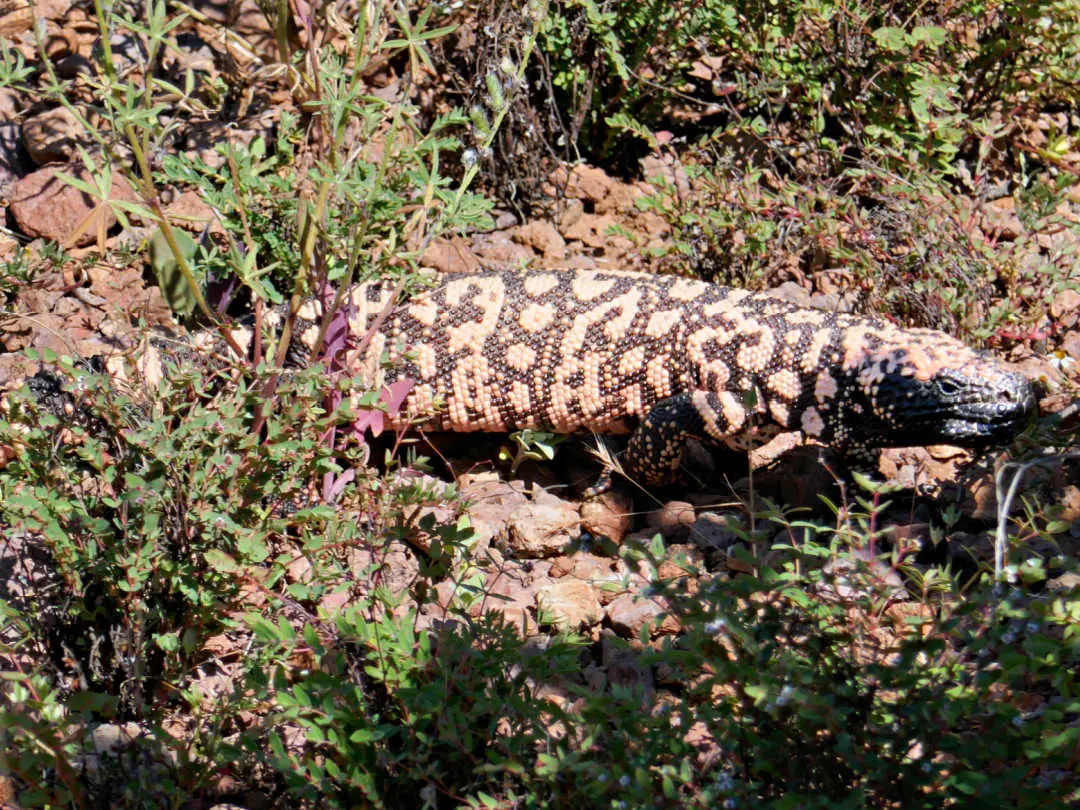
4. Go Hiking
Ready to stretch those legs? Our top trail picks:
- Arch Canyon Trail (1.4 miles round-trip) – Relatively easy hike with a natural arch payoff
- Estes Canyon/Bull Pasture Loop (3.1 miles) – More challenging with epic views
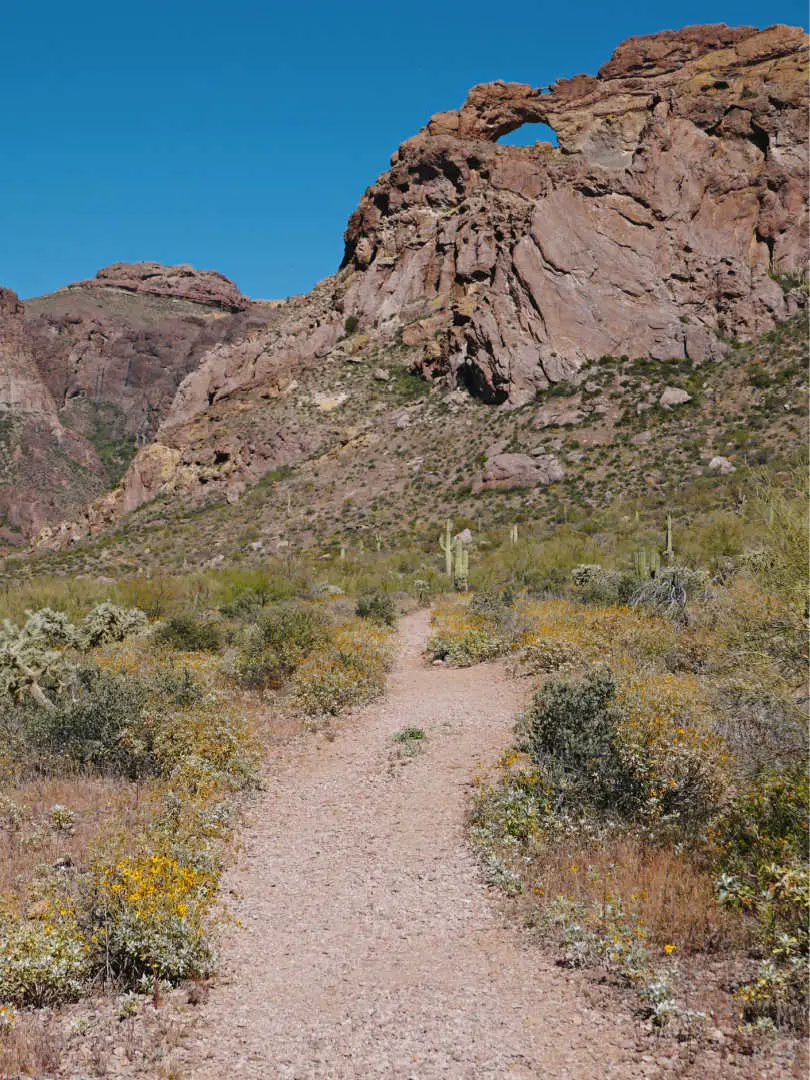
Don’t miss the two short trails near Dripping Springs Mine on the west side—these former mining roads are packed with desert history and stunning views.
5. Camp & Sleep Under the Stars
Nothing says “desert adventure” like waking up to a cactus silhouette against the sunrise! The park offers two campgrounds:
- Main campground (by visitor center): For the “I still need bathrooms” crowd
- Alamo Canyon: For the “I poop in holes I dig myself” wilderness enthusiasts
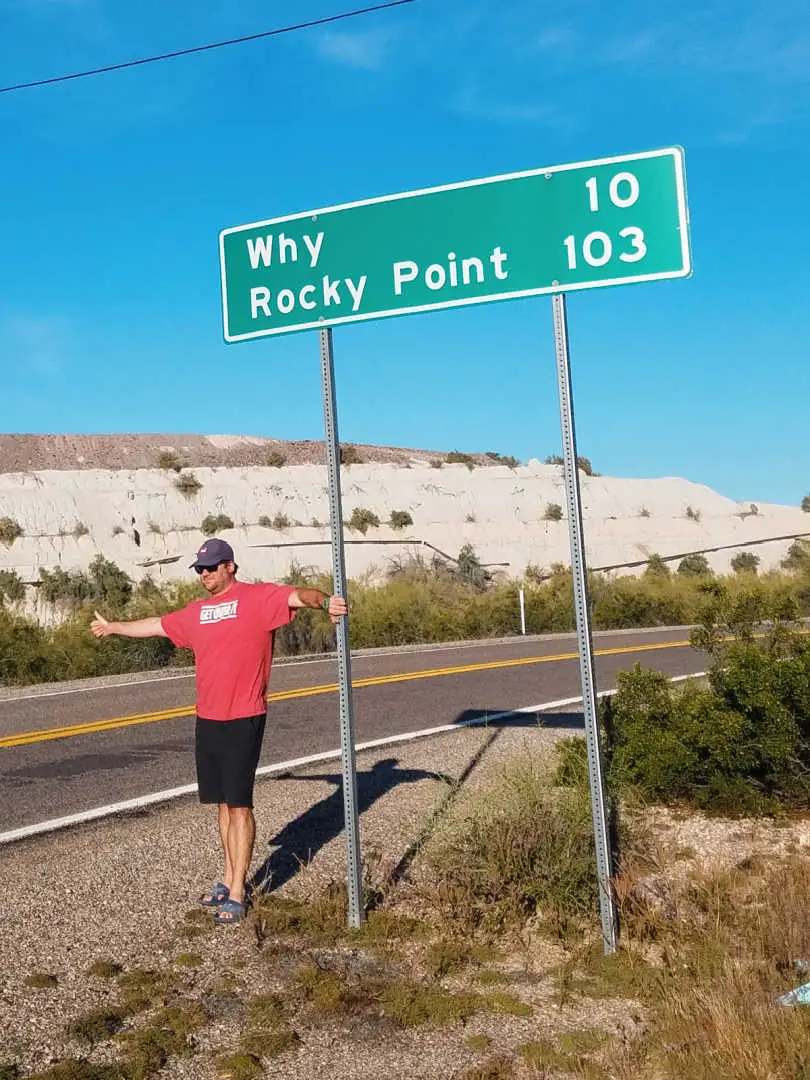
Free camping (BLM lands) is available about 20 miles north near the aptly-named town of Why. Yes, that’s really the town’s name. No, we can’t explain Why.
6. Participate in a Free Ranger Program
Want to sound smart about cacti at your next dinner party? The park rangers offer free nerdy-but-cool talks at the visitor center. They’ll answer burning questions like “Will drinking cactus water really save me in the desert?” (Spoiler: Only if you like hallucinating). Check the Organ Pipe Cactus National Monument website for program details.
7. Go Horseback Riding
Channel your inner cowboy/cowgirl on these horse-friendly trails:
- Campground Perimeter
- Victoria Mine
- Old County Road
- Lost Cabin Mine
- Senita Basin Loop
- Milton Mine
- Red Tanks Tinaja
Just one catch: You’ll need to BYOH (Bring Your Own Horse). No rental stables here, partner.
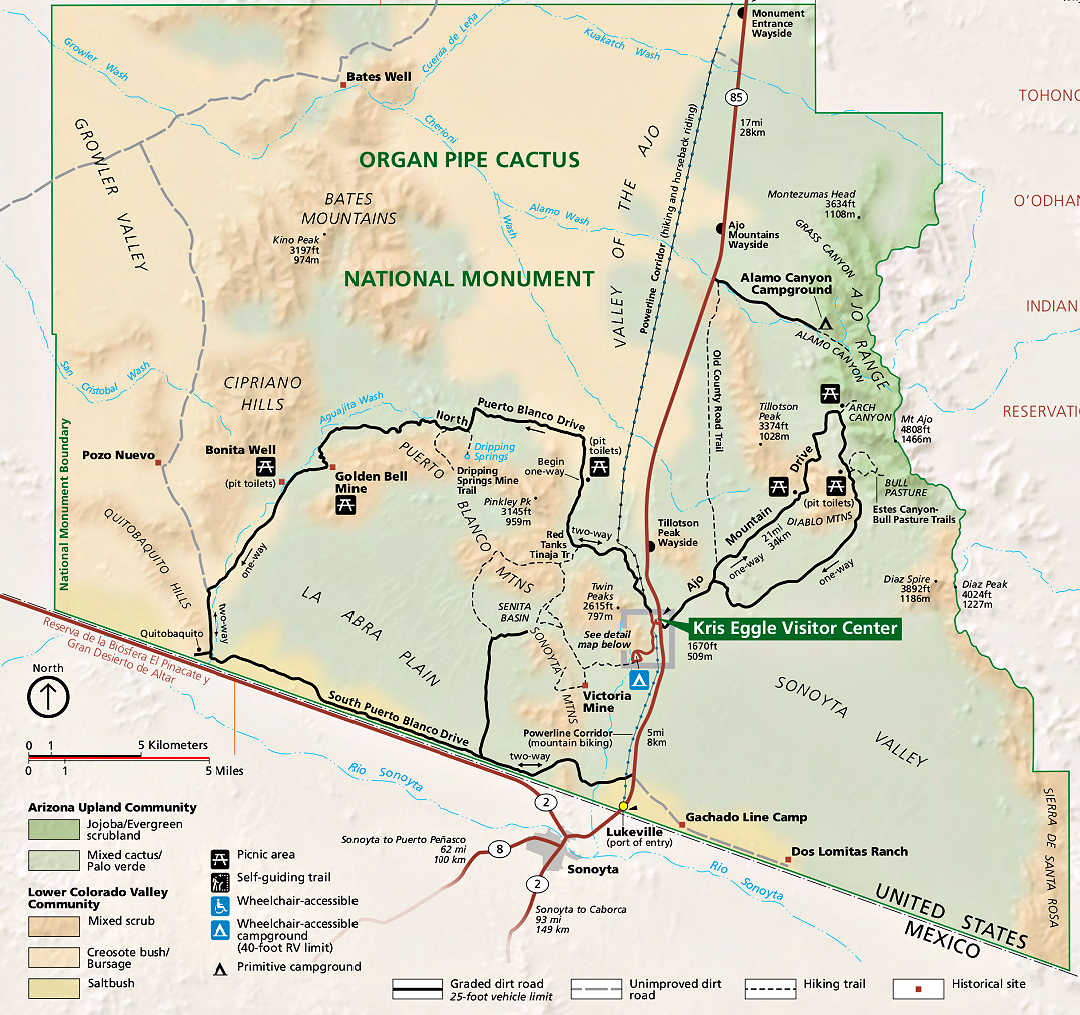
8. Gaze at the Night-Sky
The stars here will make you question why you live in a city with all those pesky streetlights. Winter brings shorter days but spectacular stargazing opportunities, complete with ranger-led constellation talks.
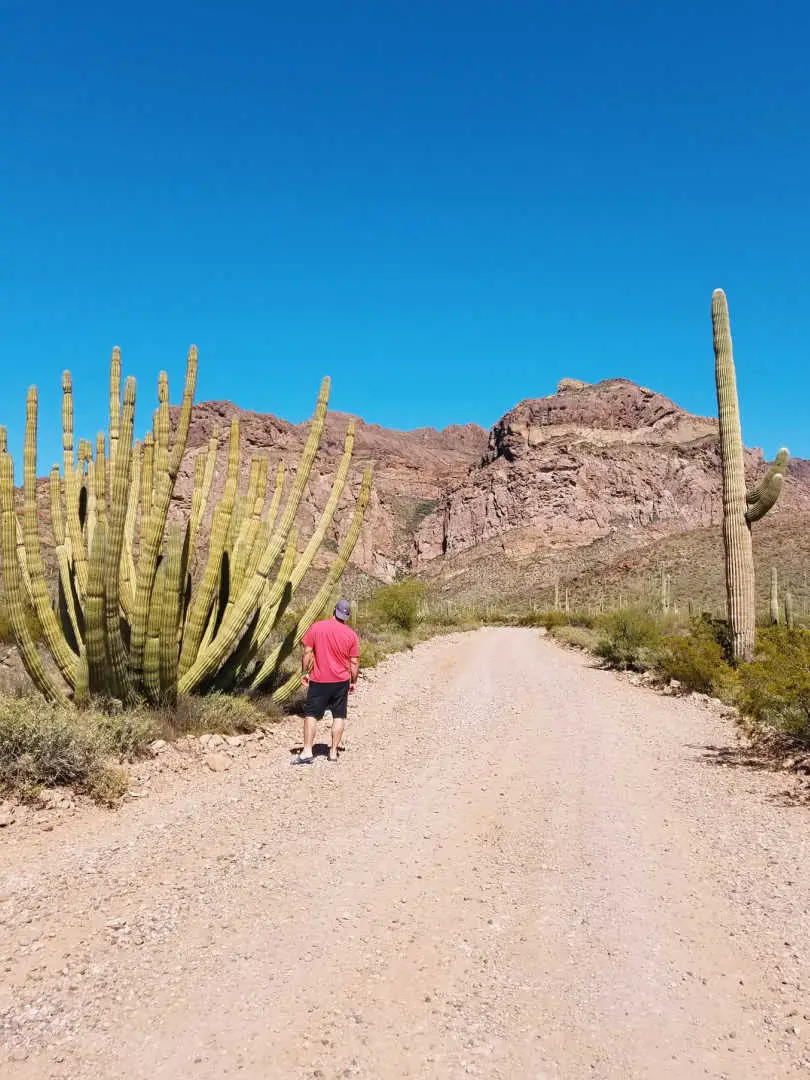
9. Become a Junior Ranger
Got kids? Get them into the Junior Ranger program and watch them transform into mini-park-protectors! They’ll learn ranger skills, get a cool certificate, and score a free badge. Warning: They may insist on wearing ranger hats forever after.
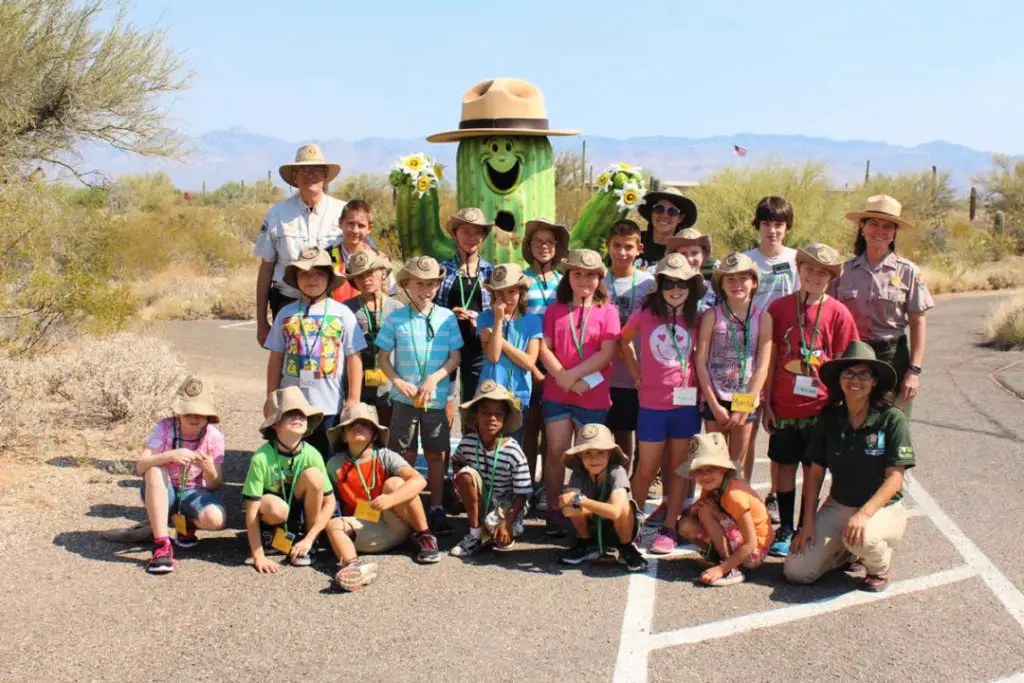
There’s absolutely nothing like Organ Pipe Cactus National Monument on this planet—or at least in the US. It’s the only place in the country where you can high-five an organ pipe cactus (figuratively—don’t actually touch them unless you enjoy picking spines out of your hand for weeks). So pack your water bottle, bring your favorite hat, and get ready for a desert adventure that doesn’t require armed guards anymore. Winning!
We Need Your Help
Did you find this article helpful? If so, bookmark it and when you’re planning your next vacation, click on any of the links below before finalizing reservations. You’ll get the best price, we’ll earn a small commission, and you’ll help support future articles.
Thank you!
BEST TRAVEL SEARCH ENGINES
🏘️ Book Accommodation
We use Tripadvisor to compare prices and reviews in advance and check availability
✈️ Book Your Flight
To find the cheapest flight options, use Skyscanner to find the most suitable choice for you
🚗 Reserve Rental Car
Use Discover Cars to compare prices and view the largest selection of vehicles

